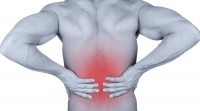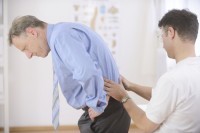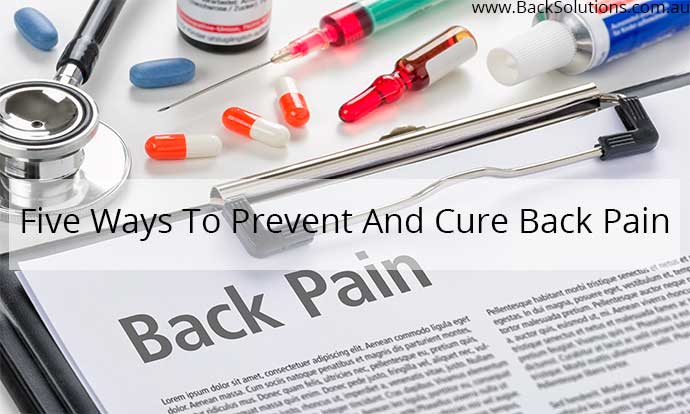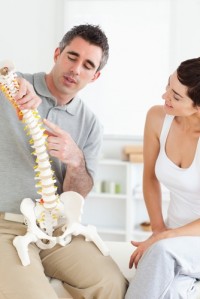Want to know how I fixed my Back Pain?
The following extremely unique treatment approach permanently fixed my debilitating back pain. It has since helped thousands of chronic back pain sufferers permanently rid themselves of their wretched condition.
If you are suffering from chronic back pain you will know that standard treatment offers limited or at best short term relief from your pain. Most of your daily functions are limited due to either pain restricted movement, or a feeling of vulnerability that causes you to brace and protect your back at all times.
The causes for back pain are varied, however regardless of what has caused your chronic back pain, you are always left with an unbalanced or weak posture. Upon looking back at photos during my years of back pain, and upon seeing thousands of people with a similar dreadful experience as mine there is without fault a very predictable posture for all chronic back pain sufferers.
The positive for you being, that if there is predictability in how your posture looks, then there is predictability on how you will respond to both exercises and treatment dedicated to addressing your posture and strengthening your body so your pain never returns.
After 2 years of constant back pain, exhausting all options ranging from physio, chiro, osteo, massage and seeing countless sports doctors and orthopedic surgeries, I realised that if I was to rid myself of my debilitating back pain, I would have to find the solution on my own.
I noticed a pattern of feeling relief for 15-20 mins after doing weight training, exercises like dips, push ups and chin ups. Given this was the only thing that provided any relief for me, I decided to carry out my research papers on ‘How to fix Back Pain with strength and resistance training’.
This research lead me to experiment with a range of exercises dedicated to strengthening the back, exercises such as back extensions, squats and deadlifts. Unfortunately despite many of these being great quality exercises, none of them provided anything more than a temporary relief to my pain.
I had surmised that chronic back pain is caused by both weakness and tightness, resulting in poor posture that places too great a load on the lower back area creating pain and tension.
Effective hands on therapy, could provide relief from the tightness, however it did nothing for the weakness.
I knew my back needed to be stronger, however after countless hours of research and experimentation, much of the exercises dedicated to strengthening my body had resulted in painful back spasms that rocked my confidence even further.
It wasn’t until 9 months into my research that I finally caught a break. If the body was not aligned both biomechanically and neurally, then no matter the quality of the exercise, you would always be using your more dominant muscles (tightness), whilst completely neglecting your weak postural muscles (weaknesses). In essence to the average person without back pain, these were great exercises as their body was in a position to fire all of their muscles. To the chronic back sufferer, with an extremely weak posture, their body was not strong enough, not balanced enough to get into the correct position to carry out strengthening exercises that would use both their tight and weak muscles. These great exercises to the back pain sufferer actually exacerbates their pain due to all the load being placed on their dominate (tight areas, mainly the back whilst their weak postural areas do little or nothing to support the movement.
We decided to experiment, addressing two main concerns:
- Poor balance due to weakness.
By using props to compensate for the weakness in not being able to start the strengthening exercises. The props or supports, allowed me to be in a position to lift no different to someone without back pain.
- Compensatory neural firing. Neural biases to tight/ dominate muscle areas.
We focused on exercises carried out in power training (more neural than strengthening). We also altered both the rep range and intensity of the exercises. Minimal reps, maximum load, to ensure the neural bias was avoided, due to the body being forced to recruit as many muscles groups and their fibres to assist with the movement.
Results at last, almost 3 years after first experience debilitating back pain, I experienced lasting relief. Over the following days i could barely walk due to muscle soreness in areas I had not used for years. However I had no back pain for 5 days straight since first carrying out the experiment.
I carried these exercises out once per week (as they were neural, the body needs up to a week of recovery), each time gaining more balance and strength. I got to the point where I no longer needed the props/ support and could carry out the exercises without assistance. It was at this point where my pain had completely gone and was not as reliant on the exercises to alleviate my pain.
Since finding a permanent solution to my chronic back pain, I have personally helped over 3,000 chronic back pain sufferers fix their back pain also. The results are just as predictable as the weak postures of all chronic back pain sufferers that present to our clinics with the same plight.
My challenge is this, show me someone who has a perfect symmetrical posture who has chronic back pain. I am yet to see it, and I’m sure I never will. Restore postural symmetry, and strengthen your body so your pain never returns.






